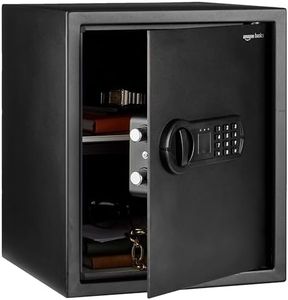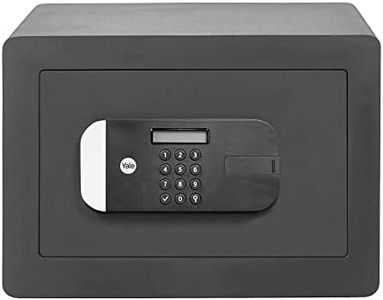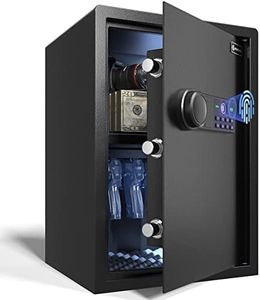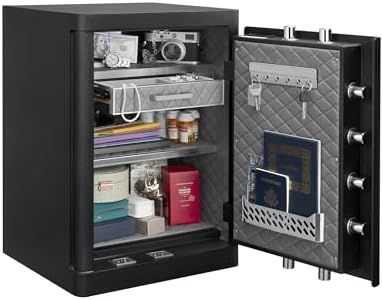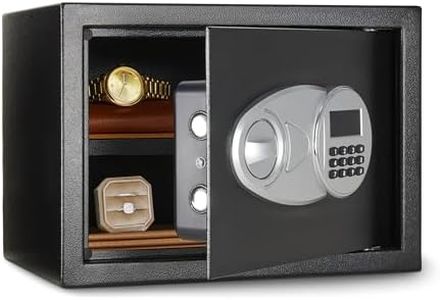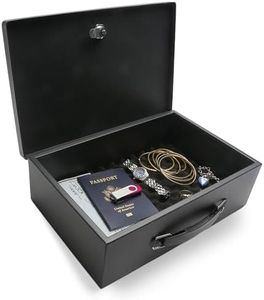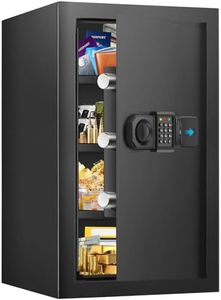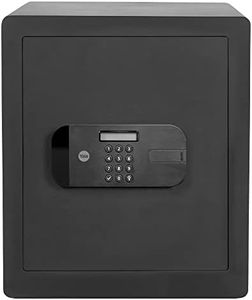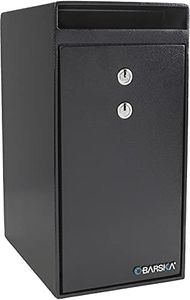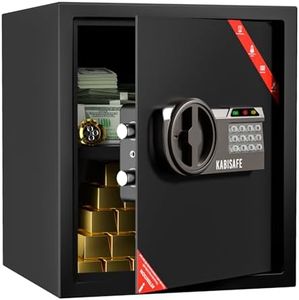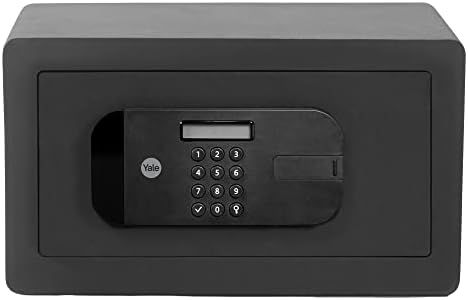We Use CookiesWe use cookies to enhance the security, performance,
functionality and for analytical and promotional activities. By continuing to browse this site you
are agreeing to our privacy policy
10 Best Safes For The Home
From leading brands and best sellers available on the web.Buying Guide for the Best Safes For The Home
Choosing the right safe for your home is an important step toward protecting your valuables, documents, and sometimes even irreplaceable items. The main idea is to find a balance between security, size, and convenience so that your safe fits both your needs and the amount and type of items you wish to store. Focus on the main features that matter for most homeowners: security ratings, fire protection, size, lock type, and ease of installation. Understanding these features will help ensure that you pick a safe suited to your personal circumstances.Security RatingThe security rating of a safe tells you how well it can withstand attempts to break into it, including prying, drilling, and other forced entry methods. Ratings might refer to residential security, burglary resistance, or even cash rating. Lower-rated safes may resist basic tampering but not determined attacks, while higher-rated safes can withstand prolonged efforts with tools. If your main concern is to keep out casual intruders or children, a basic level may suffice. However, if you are worried about more serious threats, like burglaries with tools, look for a safe with a higher security rating. Think about who you want to keep out of the safe and how likely forced entry is in your area before deciding.
Fire ProtectionFire protection is about how long the safe can keep its inside contents below a certain temperature during a fire, usually measured in minutes or hours. A typical safe might offer 30 minutes of protection, while higher-end options can go for 1-2 hours. This matters especially if you plan to store important documents or digital media that could be ruined by heat. If your main concern is fire, lean toward a safe with at least an hour of fire protection. But remember that fire ratings and security ratings are separate, and you may need to compromise between the two or find a model that combines both.
Size and CapacitySize is about both the outside dimensions of the safe and how much it will hold inside. Safes come in small, easily hidden designs all the way to large cabinets meant for many items. If you only need to protect passports, cash, or jewelry, a compact safe is fine. For larger items or if you want to store collections or documents, you will need more space. Always think ahead to whether you might need more room in the future, as it's common to underestimate how much you want to store.
Lock TypeSafes use different types of locks, including key locks, mechanical dial combinations, and electronic keypads. Key locks are simple but can be lost; dial combinations are reliable but slower, and electronic keypads offer fast access and sometimes multiple codes. Some high-end options have biometric (fingerprint) access. If you want quick, regular access, go for an electronic keypad or biometric model. For less frequent use or higher reliability over many years, a mechanical lock might be best. Choose based on how often you plan to open the safe and your comfort with technology.
Ease of InstallationSome safes are designed to be 'portable' while others are meant to be bolted to the floor or wall (anchored). Anchoring adds security against thieves who might steal the whole safe, but it requires more effort to install, sometimes professional help. Smaller safes can often be hidden but are easier to carry away if not secured. Consider how and where you want to install the safe—if you rent, for example, you may have limits on what you can bolt down. Match installation complexity and mobility to your living situation and security needs.
